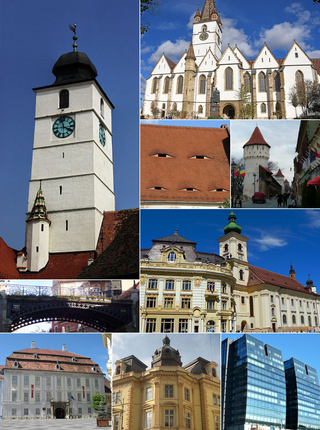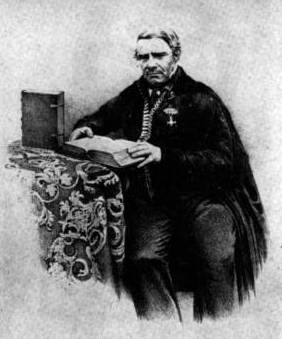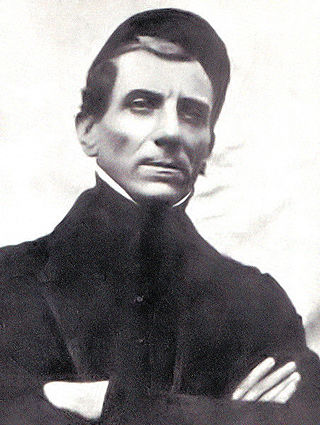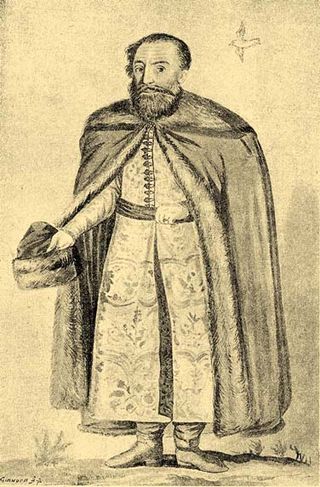
Transylvania is a historical and cultural region in Central and Eastern Europe, encompassing central Romania. To the east and south its natural border is the Carpathian Mountains and to the west the Apuseni Mountains. Broader definitions of Transylvania also include the western and northwestern Romanian regions of Crișana and Maramureș, and occasionally Banat. Historical Transylvania also includes small parts of neighbouring Western Moldavia and even a small part of south-western neighbouring Bukovina to its north east. The capital of the region is Cluj-Napoca.

Sibiu is a middle-sized, well-preserved fortified medieval town in central Romania, situated in the historical region of Transylvania. Located some 275 km (171 mi) north-west of Bucharest, the town straddles the Cibin River, a tributary of the Olt River. Now the county seat of the Sibiu County, between 1692 and 1791 and 1849–65 Sibiu was the capital of the Principality of Transylvania. During the Modern era, the Hecht hause in Sibiu served as the seat of the Transylvanian Saxon University.

Mediaș is the second largest town and municipality in Sibiu County, Transylvania, central Romania.

Johann Michael Ackner was a Transylvanian archaeologist and nature researcher.

The Transylvanian Saxons are a people of mainly German ethnicity and overall Germanic origin; mostly Luxembourgish initially during the medieval Ostsiedlung process, then also from other parts of present-day Germany who settled in Transylvania in various waves, starting from the mid and mid-late 12th century until the mid 19th century.

Sebeș is a city in Alba County, central Romania, southern Transylvania.

Conrad Haas (1509–1576) was an Austrian or Transylvanian Saxon military engineer. He was a pioneer of rocket propulsion. His designs include a three-stage rocket and a manned rocket.

The Germans of Romania represent one of the most significant historical ethnic minorities of Romania.

Stephan Ludwig Roth was a Transylvanian Saxon intellectual, teacher, pedagogue and Lutheran pastor.
Christian Schesaus was a Transylvanian Saxon humanist, poet, and Lutheran pastor.

Biertan is a commune in Transylvania, Romania. The commune is composed of three villages: Biertan, Copșa Mare, and Richiș, each of which has a fortified church.
The Democratic Forum of Germans in Romania is a political party organised on ethnic criteria representing the interests of the German minority in Romania.

Transylvanian Saxon is the native German dialect of the Transylvanian Saxons, an ethnic German minority group from Transylvania, a historical region situated in central Romania, and is also one of the three oldest ethnic German and German-speaking groups of the German diaspora in Central and Eastern Europe, along with the Baltic Germans and Zipser Germans. In addition, the Transylvanian Saxons are the eldest ethnic German group of all constituent others forming the broader community of the Germans of Romania.
Oskar Pastior was a Romanian-born German poet and translator. He was the only German member of Oulipo.
Michael Gottlieb Agnethler was a German botanist and numismatist.
Günter Fronius was an Austrian entrepreneur and the founder of Fronius International GmbH. He was born in Hermannstadt, Austria-Hungary, and obtained his engineering degree from Breslau University of Technology in 1945.

Michael Weiß (also spelled Michael Weiss, born in 1569, in Medgyes, deceased 16 October 1612, in Barcaföldvár was a Transylvanian Saxon politician and historian. He is mostly known for being the mayor of Brassó.

Soterius von Sachsenheim is a Transylvanian Saxon noble family originating from the village Stein, in the former Saxon Repser Stuhl administrative division. Among its members were politicians and bureaucrats in the Transylvanian state administration and also army officers, scholars, pastors and artists.

St. Margaret's Church is a Lutheran church, located at 1 Piața Castelului in the historic town center of Mediaș (Mediasch), Sibiu County, in the Transylvania region of Romania.















